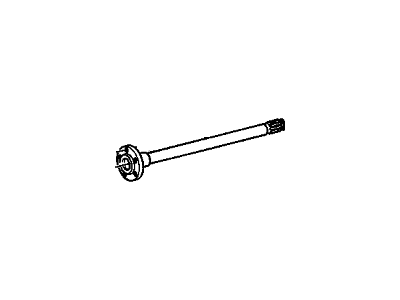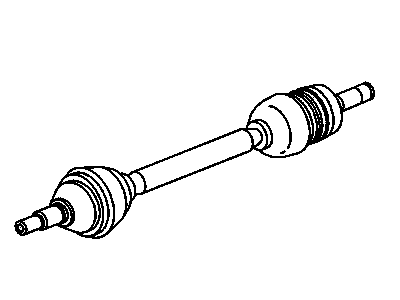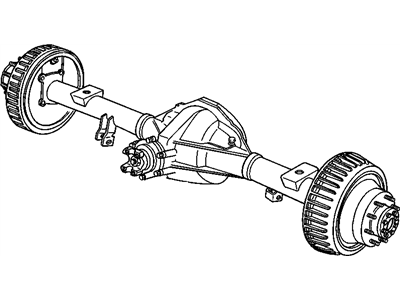
My Garage
My Account
Cart
Genuine Chevrolet C1500 Axle Shaft
Car Axle Shaft- Select Vehicle by Model
- Select Vehicle by VIN
Select Vehicle by Model
orMake
Model
Year
Select Vehicle by VIN
For the most accurate results, select vehicle by your VIN (Vehicle Identification Number).
9 Axle Shafts found
Chevrolet C1500 Rear Axle Drive Shaft
Part Number: 26010416$240.70 MSRP: $380.44You Save: $139.74 (37%)Ships in 1-3 Business Days
Chevrolet C1500 Axle Shaft
Chevrolet C1500 autos' Axle Shaft is always a vital element needed for the transmission of power from the differential to the drive wheels that can independently rotate for better grip. Depending on the type of the car or a truck, there are solid axles for earlier models and the half axles for cars which have independent suspension systems. The differential and axle shafts are housed in the solid axles whereas half shafts relaying the power from the transaxle to the wheels. Axle shafts can rub against the nearby objects and get damaged resulting in problems such as noise and vibration while halfshafts may develop problems due to damage to the CV Joints or the boots on the halfshafts. Altogether, Axle Shafts provide assistance in case of weight-bearing along with the supply of torque and keeping the direction of the wheel aligned in Chevrolet C1500 vehicles.
Each OEM Chevrolet C1500 Axle Shaft we offer is competitively priced and comes with the assurance of the manufacturer's warranty for the part. Furthermore, we guarantee the speedy delivery of your orders right to your doorstep. Our hassle-free return policy is also in place for your peace of mind.
Chevrolet C1500 Axle Shaft Parts Questions & Experts Answers
- Q: How to remove and install rear axle shafts on Chevrolet C1500?A:Raise the rear of the vehicle, support it securely on jackstands and block the front wheels. Remove the wheel and brake drum. On locking differential equipped models, remove both rear wheels and brake drums. Remove the differential cover and allow the lubricant to drain into a container. Remove the lock screw and pull out the pinion shaft. Have an assistant push in on the outer flanged end of the axle shaft while you remove the C-rock from the groove in the inner end of the shaft. Rotate the differential for access, support the pinion shaft so it won't fall into the case, then remove the lock screw. Withdraw the pinion shaft part way. Rotate the differential until the shaft touches the case, providing enough clearance for access to the C-locks. Use a screwdriver to rotate the C-lock until the open end points in. With the C-lock in position so it will pass through the end of the thrust block, push the axle shaft in and remove the C-lock. Repeat the operation for the opposite axle shaft. With the C-lock removed, withdraw the axle shaft, taking care not to damage the oil seal. Some models have a thrust washer in the differential; make sure it doesn't fall out when the axle shaft is removed. To install, carefully insert the axle shaft into the housing and seat it securely in the differential. Install the C-lock in the axle shaft groove and pull out on the flange to lock it. Insert the pinion shaft, align the hole in the shaft with the lock screw hole and install the lock screw. Tighten the lock screw to the torque. Install the C-locks with the pinion shaft still partially withdrawn. Make sure the C-locks are positioned correctly. Withdraw the axle shaft carefully until the C-lock clears the thrust block. After the C-locks are installed, push the pinion shaft into place with the groove lined up with the lock screw hole, then install the lock screw. Tighten the lock screw to the torque. Install the cover and fill the differential with the lubricant. Install the brake drums and wheels and lower the vehicle.














